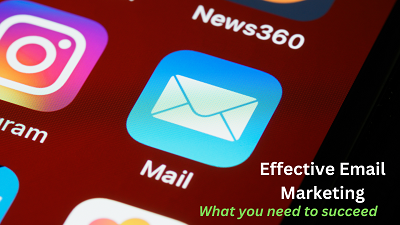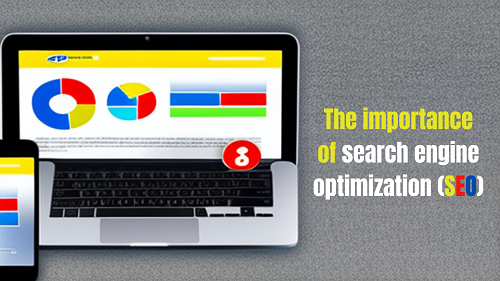Email marketing can be a great way to reach out to your target audience and promote your brand or product. However, it can be difficult to stand out from the crowd and get your emails noticed. Here are three ideas for your next email marketing campaign that can help you achieve success:
One way to make your emails more effective is to personalize them for each recipient. This could include using their name in the subject line or body of the email, or tailoring the content to their specific interests. By making your emails more personal, you will increase the chances of them being opened and read.
In this article, we will share 3 Ideas you can apply for Your Next Effective Email Marketing Campaign
1: Create Strategies for Improving Email Open Rates and Engagement
Email marketing can be a powerful tool for reaching and engaging your audience, but it’s only effective if your emails are actually being opened and read. Here are 5 strategies for improving email open rates and engagement.
- Segment your email list. Segmenting your email list based on factors like demographics, past purchases, or engagement history can help you send more targeted and relevant emails that are more likely to be opened.
- Make sure your emails are mobile-friendly. More and more people are checking their email on their mobile devices, so it’s important that your emails are optimized for mobile.
- Test different send times. Experiment with different send times to see when your audience is most likely to be checking their email.
- Use a clear and compelling call to action. Your call to action should be easy to find and clearly communicate what you want the recipient to do.
- Keep your emails short and to the point. People are busy and don’t have time to read long emails. Keep your emails concise and focused on one main message.
By implementing these strategies, you can increase the chances that your emails will be opened and engaged with by your audience.
2: Develop Best Practices for Writing Effective Email Subject Lines
Email subject lines are one of the most important components of your email marketing campaigns. They are the first impression your audience will have of your email, and they can make or break the success of your campaign. Here are 10 best practices for writing effective email subject lines.
- Keep it short and sweet. Your subject line should be no more than 50 characters. Anything longer and it may get cut off in the recipient’s inbox.
- Make it relevant. Your subject line should accurately reflect the content of your email.
- Use action-oriented language. Phrases like “don’t miss out” or “limited time offer” can create a sense of urgency and encourage the recipient to take action.
- Personalize it. Use the recipient’s name in the subject line to make it feel more personal.
- Avoid using all caps or exclamation points. This can make your email look spammy and turn off recipients.
- Test different subject lines. A/B test different subject lines to see which ones get the best open rates.
- Use numbers. Using a number in your subject line can help it stand out and make it more memorable.
- Keep your brand in mind. Make sure your subject line reflects your brand and is consistent with your messaging.
- Use emojis. Adding an emoji to your subject line can help it stand out in a crowded inbox.
- Make it intriguing. Use a question or a provocative statement to pique the recipient’s curiosity and encourage them to open your email.
By following these best practices, you can write subject lines that capture your audience’s attention and increase the success of your email campaigns.
3: Segment Your Email List for Maximum Impact and ROI
Segmenting your email list is an effective way to send more targeted and relevant emails to your audience. By tailoring your messaging to different segments of your list, you can increase engagement, drive more conversions, and ultimately achieve a higher ROI. The following are how you can segment your email list for maximum impact and ROI.
- Use engagement metrics. Segment your email list based on how engaged subscribers are with your content. For example, you could create segments for subscribers who regularly open and click on your emails versus those who rarely engage. This can help you tailor content and messaging to re-engage disengaged subscribers and nurture engaged ones.
- Create segments based on lifecycle stages. Consider segmenting your email list based on where subscribers are in your customer journey. For example, you could have segments for new subscribers who haven’t made a purchase yet, loyal customers who have made multiple purchases, and those who have lapsed and haven’t made a purchase in a while. This can help you send targeted emails that move subscribers from one stage to the next and improve overall customer retention.
- Use location-based segmentation. If you have a physical storefront or host events in certain areas, consider segmenting your email list by location. This can help you send targeted emails about promotions or events that are relevant to subscribers in a particular area.
- Create segments based on job title or industry. If you’re a B2B company, consider segmenting your email list based on job title or industry. This can help you send targeted emails that speak to the unique challenges and pain points of subscribers in a particular industry or role.
- Use behavior-based segmentation. Consider segmenting your email list based on specific actions subscribers have taken on your website or in previous emails. For example, you could have segments for subscribers who have added items to their cart but haven’t completed a purchase or those who have clicked on a particular link in a previous email. This can help you send targeted emails that address the specific needs or interests of these subscribers.
By using a combination of these segmentation strategies, you can create a highly targeted and effective email marketing campaign that drives maximum impact and ROI.
Conclusion
Finally, it is essential that your email content is well-written and engaging. boring or spammy content will not encourage people to open your emails, let alone click through to your website or purchase your product. Take some time to develop quality content that will interest and engage your target audience.
Also Read:







